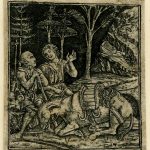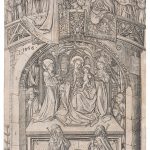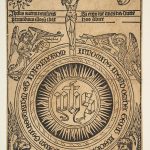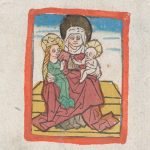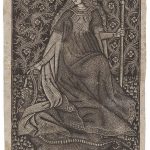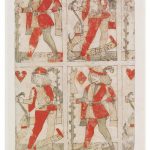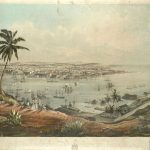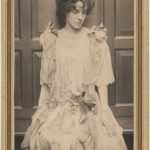15th Century Prints. During the fifteenth century printing became more popular as paper became freely available and cheaper, and the average artistic level fell, so that by the second half of the century the typical woodcut is a relatively crude image. The great majority of surviving 15th-century prints are religious, although these were probably the ones more likely to survive. Their makers were sometimes called “Jesus maker” or “saint-maker” in documents. As with manuscript books, monastic institutions sometimes produced, and often sold, prints. No artists can be identified with specific woodcuts until towards the end of the century. Reference: Wikipedia
Below are some examples of 15th century prints including an engraving in the niello style and a fragment of uncut playing cards showing the Knave of Hearts and Knave of Diamonds
This is an example of an engraving printed from a plate engrave in the niello style. It dates between 1490-1520 and was made by: Peregrino da Cesena Reference: © The Trustees of the British Museum
This is a very rare and highly important print of The Madonna of Einsiedeln: Large Version engraving. It dates to 1466 and is on laid paper without watermark,
It sold for USD 372,500 at Christie’s in 2019
MASTER E.S. (ACTIVE CIRCA 1450-67) The Madonna of Einsiedeln: Large Version
This woodcut of St. Anne with the Virgin and the Christ Child was made in Germany between 1450 – 1460. It is a woodcut which has been hand colored. It also has gold leaf. The artist is unknown.
Reference: The Metropolitan Museum of Art
This engraving of Saint Margaret was made in the dotted manner around 1450
Reference: Museum of Fine Arts Boston
Fragment of an uncut sheet of playing cards showing the Knave of Hearts and Knave of Diamonds repeated alternately. This fragment shows two rows, each with two cards and a fragment of one more. Both Knaves wear fashionable, aristocratic, motley costume, in red, yellow and green.
This playing-card is part of a larger sheet printed also with three images of the Knave of Diamonds and three images of the Knaves of Hearts. It was cheaper for playing-card makers to print several cards on one sheet of paper, colour them through a stencil and then cut the sheet up into individual cards, than to print and colour cards individually. Although over 500 years old, this card is still recognisable as the Knave (or Jack) of Diamonds. This shows how static the basic elements of the design have remained over the centuries.1490-1500 (printed)
Reference: © Victoria and Albert Museum
